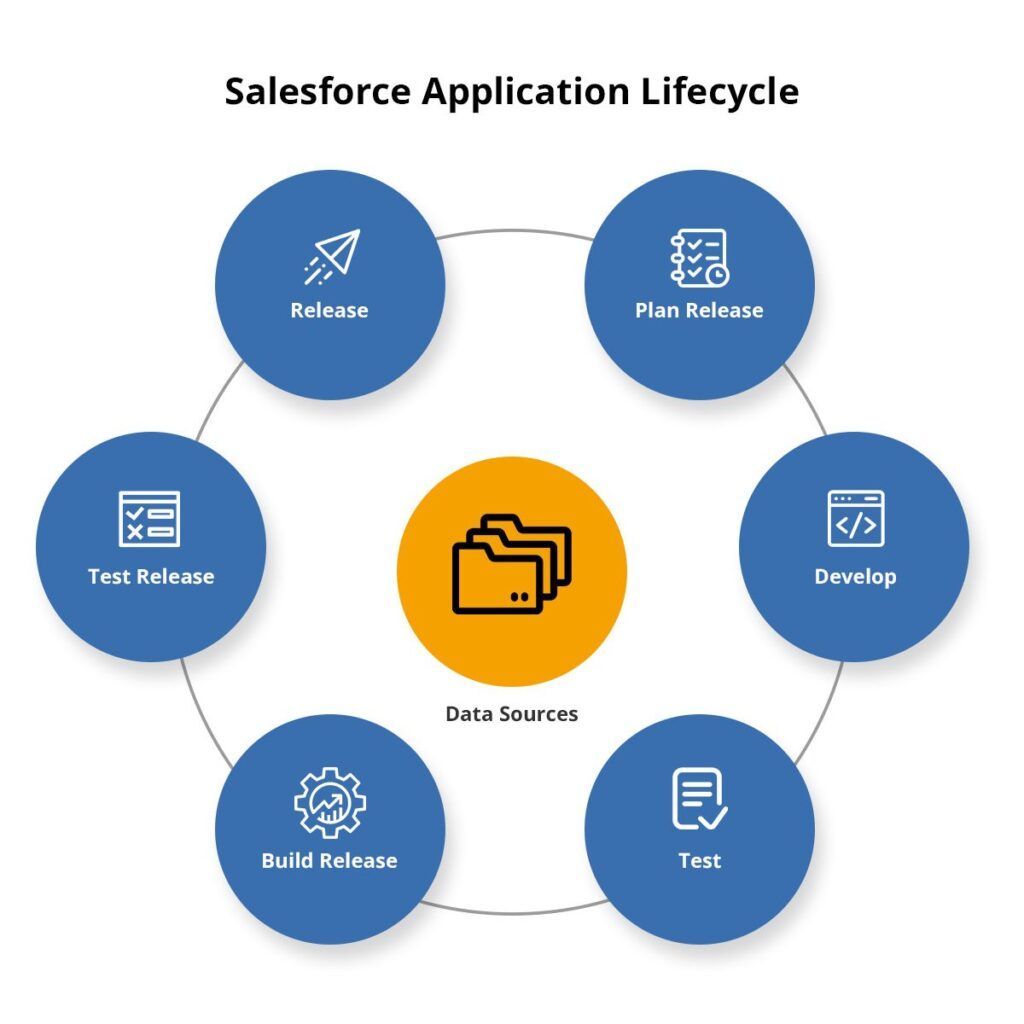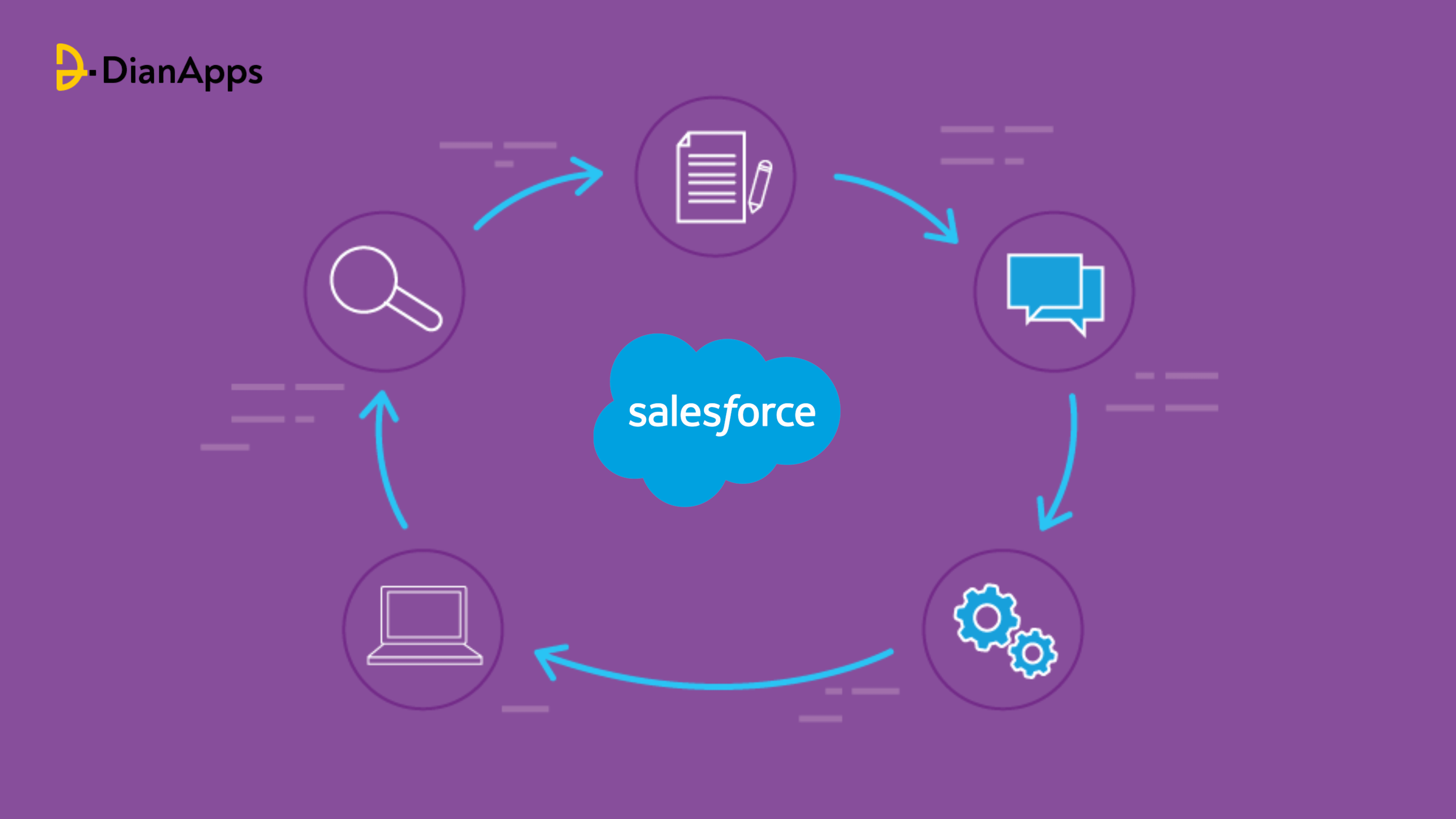To survive in the changing digital landscape, organizations need to indulge themselves in an effective and value-adding app development. The reason for such indulgence is to become productive in terms of serving customers in a friendly ecosystem. Even though setting up a business application seems futuristic, one must keep in mind that software app development is not a simple task, especially when it comes to establishing different software development processes.
Moreover, to remove the burden of complexity, Cloud-based technologies have captured people’s attention and established a dominating position in the sector. However, creating a cloud-based solution like the Salesforce app development instance is a difficult undertaking. Salesforce app development projects are created in Eclipse, making it simple to integrate via a plugin. However, the Salesforce app development solution process is not extremely linear and straightforward.
Therefore, to captivate your business, hiring a Salesforce consulting partner is a good call. Developers must focus on various factors to ensure effective development while decreasing potential stress and dangers and ensuring quicker deployments and development efficiency.
Here in this blog, we are going to discuss what the Salesforce development lifecycle is all about on the cloud to have a better understanding and a complete overview of the Salesforce application development lifecycle that will help you choose the right Salesforce partner effectively. So, without further ado, let’s begin!
What is Salesforce App development?
A Salesforce application development is a service that aims to empower specific sales, marketing, and customer service processes that a regular Salesforce CRM system cannot determine. In a nutshell, businesses can now focus on building bug-free, efficient, and sturdy applications that induce your business idealization. While seamlessly increasing the company sales, solving customer problems, and lastly taking costume service processes a notch higher.
What makes the Salesforce app development lifecycle unique?
The Salesforce app development solution environment is a fully integrated platform for developing Force.com apps using Visualforce, Apex, and metadata components. It is built on Eclipse, unlike any other software development platform, and can be integrated with apps using any plugin.
The most intriguing aspect of the Salesforce development lifecycle is that all data is kept on a local and centralized file system, allowing developers to just transfer opportunities to the source repository and subsequently to Salesforce.
Developing a Salesforce app involves crucial participants that help in scaling your business operations effortlessly. Look below to find out:
1. Product manager: The one who take charge of all the management and curating of the final business requirements.
2. Release manager: The one who looks after the release schedule with the client and development team.
3. Salesforce developer: The one who creates deliverables and does the primary coding for the application development.
4. Quality analyst: The one who takes control of all the final deployments while checking and confirming various functionalities of the application.
5. Trainer: The one who assists the other working groups.
Stages involved in the Salesforce app development lifecycle.
The Salesforce development lifecycle goes through several stages before you obtain your intended Salesforce project. We have detailed all of the stages of the lifecycle here.

1. Discovery phase
It is the first and most important step that helps the successful execution of the Salesforce development process. During this phase, the Salesforce Implementation Preliminaries are completed, and the relevant information for the implementation is collected, reviewed, and discussed with the hired Salesforce consulting partner. The following aspects are examined during the discovery phase:
The business’s goals and objectives, as well as the project at hand, are assessed.
- Risks, gaps, and requirements are recognized.
- Assessing the existing systems that require customer relationship management system integration
- Get a clear picture of the deployment scope.
- Recognize the reporting needs, etc.
2. Set up source control repository
Maintain a separate Git repository for your project, complete with a default branch that serves as the Master branch. The production metadata will be stored in the Master branch. The release manager provides various branches for development project features that will be addressed by separate Salesforce app developers.
3. Development
Salesforce developers would work on the production in sandboxes to ensure that the code did not have an impact on the main Salesforce org. The Force.com IDE supports connecting sandboxes and obtaining information. The first phase of unit testing will commence when the necessary coding is completed.
4. Testing
After development is completed, the code will be sent to the testing team. The QA team, like the developers, maintains sandboxes to transfer code to be tested. Team members may only be able to test a single feature. Partial Copy Sandboxes would be used in such instances. If rigorous testing is required for some critical features, QA team members can also share their sandboxes.
5. Acceptance testing
After that, the Salesforce app development project moves on to user acceptability testing. Apart from the developers and testers, additional possible users would undertake the final testing to ensure that the solution meets expectations.
The release manager would construct partial sandboxes for product managers to test in.
6. Product Launch
The last phase will concentrate on all performance testing. This type of testing is done on intermediate sandboxes, which incorporate all of the solution’s functionality, as opposed to partial sandboxes. After rigorous testing and regression testing, the product is released after passing all phases of testing.
Conclusion
Salesforce app development is a great start for a business to contemplate successful results while collaborating with a variety of tools and technologies that effectively enhance your application. These were our take on providing the ultimate guide to the salesforce app development lifecycle.
If in case you are looking for a robust and effective Salesforce development company that can streamline your business operations and improve your productivity then our best bet is to hire a renowned Salesforce solution partner like DianApps for the scalability you want your business to achieve.
Being a certified Salesforce solution provider, we believe in offering the ultimate Salesforce app development services to our clients. Our team of Salesforce consultants is proficient in handling Salesforce business while introducing clients to various aspects of the Salesforce CRM system. For more information get in touch with our executive team and begin your Salesforce app development requirements now!
Also Read: Steps to choose the right salesforce consulting partner.










Leave a Comment
Your email address will not be published. Required fields are marked *